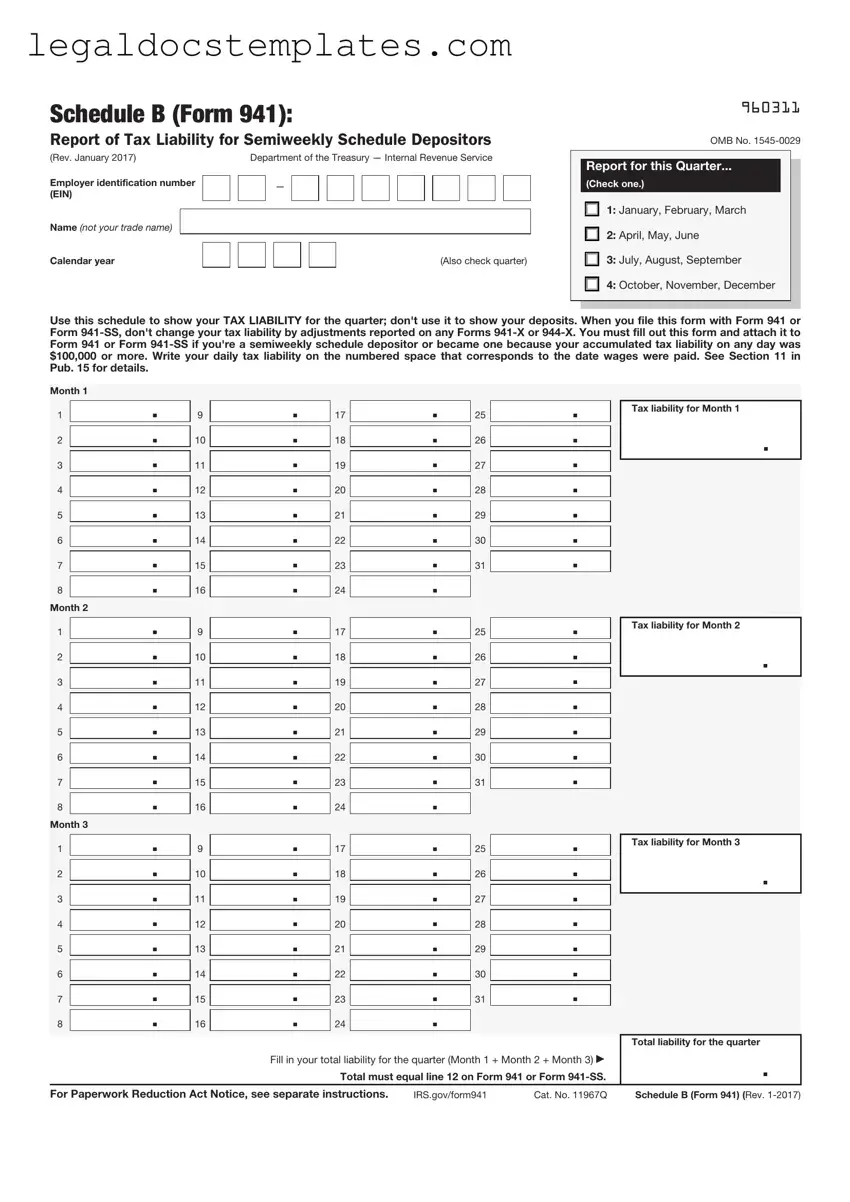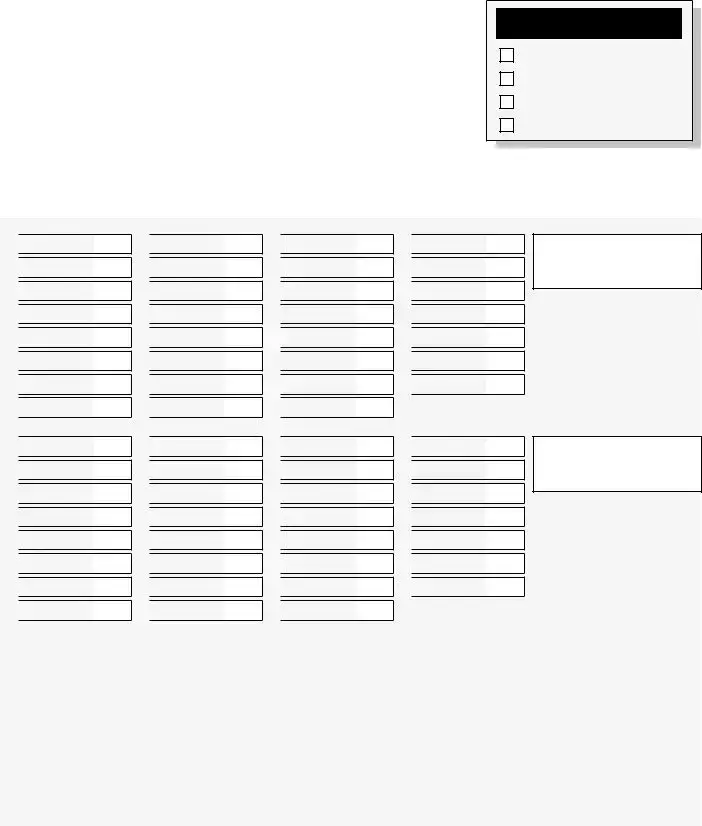The IRS Schedule B (Form 941) closely resembles the Form 940, which is the Employer's Annual Federal Unemployment (FUTA) Tax Return. Both forms serve as supplemental reports for businesses, designed to detail specific tax obligations to the IRS over the calendar year. Just like Schedule B breaks down an employer's federal tax liability per pay period, Form 940 outlines an employer’s annual contributions to federal unemployment taxes, providing a summary of what they owe or have paid throughout the year. This similarity lies in their function to categorize and summarize tax details tied to payroll obligations.
Another document akin to the IRS Schedule B (Form 941) is the Form W-2, Wage and Tax Statement. While the Schedule B focuses on an employer's detailed report of payroll taxes for each quarter, the W-2 form is given to each employee at the end of the year, detailing their annual wages and the amount of taxes withheld from their paycheck. Both documents are integral to tax reporting for employment, highlighting payroll taxes from two different perspectives: the employer's overall liability (Schedule B) and the individual employee’s deductions (W-2).
Form 945, Annual Return of Withheld Federal Income Tax, also shares similarities with Schedule B (Form 941) as they both involve tax withholding. Form 945 is used to report federal income tax withheld from nonpayroll items, such as pensions, annuities, and IRA distributions. Like Schedule B, which details payroll tax liabilities for each period, Form 945 provides a summary of withheld taxes on specified nonpayroll distributions. These forms work together to ensure the IRS has a comprehensive view of both payroll and nonpayroll withholding obligations fulfilled by an entity.
Finally, the Form 1099 series, particularly Form 1099-MISC (Miscellaneous Income), bears resemblance to Schedule B (Form 941) in its purpose to report specific financial activities to the IRS. Form 1099-MISC is used by businesses to report payments made to non-employees, such as independent contractors. Although Schedule B is focused on payroll tax liabilities and Form 1099-MISC on payments to non-employees, both are crucial for accurate tax reporting by businesses. They ensure that the IRS receives detailed information on different types of payments and liabilities accrued over the fiscal year.


 .
. .
. .
. .
. .
. .
. .
. .
. .
. .
. .
. .
. .
. .
. .
. .
. .
. .
. .
. .
. .
. .
. .
. .
. .
. .
. .
. .
. .
. .
. .
. .
. .
. .
. .
. .
. .
. .
. .
. .
. .
. .
. .
. .
. .
. .
. .
. .
. .
. .
. .
. .
. .
. .
. .
. .
. .
. .
. .
. .
. .
. .
.